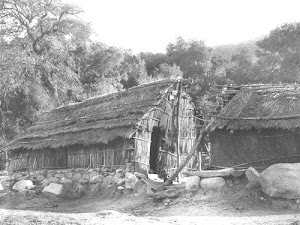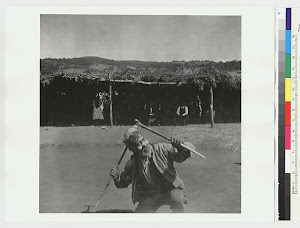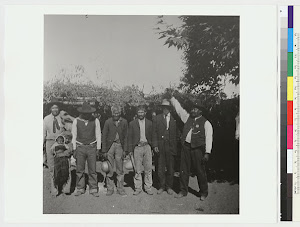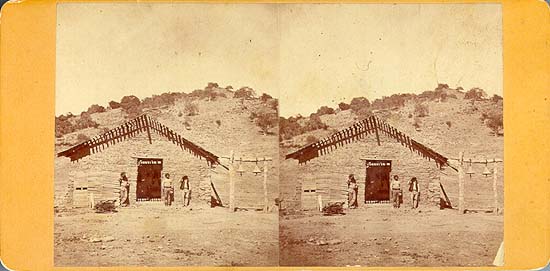Tribe backs national channel from KVCR
First Voices: a pubTV first about the original Americans
Published in Current, July 26, 2010
By Steve Behrens
A small Native tribe near San Bernardino, Calif. — the San Manuel Band of Serrano Mission Indians — has pledged $6 million over three years to help pubTV station KVCR develop what the partners say will be the first national TV channel about Native Americans.
Larry R. Ciecalone, KVCR president, expects the channel will launch in spring 2011 — initially reaching six tribes in its broadcast area via cable TV or a multicast DTV.
It won’t be assembled exclusively for Native Americans, Ciecalone cautions, because the Indians’ story is “a very important part of our history” for the general audience to know, Ciecalone says.
“We’ve discovered a lot of content looking for a place to go,” he told Current last week.
A prime source may be Native American Public Telecommunications, but its archive wouldn’t fill a 24-hour channel for long. It has fostered about 100 hours of programming, says NAPT Executive Director Shirley Sneve, but the CPB-backed group now has ready-to-go broadcast rights for only about half of them.
Other caches of videotape also could unspool on the new channel, Sneve says, citing stations and tribes that produce weekly or monthly programs about Native issues. For example, WDSE in Duluth, Minn., has produced five 15-program seasons of Native Report. The Tulalip tribes near Everett, Wash., put out a stream of programs for a cable channel that they call KANU.
When KVCR’s channel goes national, Ciecalone says, he’d like to see stations elsewhere pairing up with local tribes and producing shows that they, too, would contribute to the national channel.
Ciecalone is moving to hire an executive director for the channel, and he expects to hire 10 to 15 additional staffers.
Long-term-minded fundraisers hope that broadened programming will bring minority audiences, followed a while later by minority donors, but many Native Americans on reservations have almost no disposable income.
The San Manuel Band, however, is one of the few fortunate tribes with a large and busy gambling casino. The tribe has only about 200 members but it says it has 3,000 employees to run the gaming and entertainment complex, where B.B. King and Buddy Guy will perform in coming weeks.
The tribe not only invests in building and buying hotels around the country, but also donates generously to nonprofits and charity. San Manuel leaders wrote a $1.7 million check for Haitian earthquake relief and recently donated $2 million or more to two universities in distant states.
KVCR was not left out. Before announcing the $6 million gift to the station, the tribe had given the station $1.5 million for new facilities, and had funded The People of the Pines, KVCR’s series of 12 half-hour documentaries about the San Manuel band and other California tribes.
Ramos also was elected to the board of the San Bernardino Community College District, KVCR's licensee, and is now chair of that board.
Starting a unique and useful channel also could help KVCR keep more federal funding and more spectrum, now that Washington policymakers are frowning on multiple stations that air duplicative programming within a single metro area. The FCC is moving to squeeze underused spectrum from broadcasters, and CPB is holding mixers to inspire mergers among KVCR and the three other pubTV licensees around Los Angeles.
\The tribe got to know KVCR as its leaders realized how few local people knew Native American history — and were especially clueless about California tribes. The tribe put the story on CD-ROMs for classroom use, says James Ramos, chair of the tribal council. Then the tribe began developing the historical series The People of the Pines with KVCR.
“We started meeting on how we could get this message out there,” he says. “We started talking about this TV channel.”
In Spain’s colonial days, the California missions took Native children "basically as indentured laborers,” and the Mexican rulers who followed the Spanish “were even worse,” offering bounties for Natives killed, Ramos says. When Americans joined the Gold Rush, they sent militias into the hills to protect the timber and minerals they believed were theirs. As whites settled the valley, they gradually pushed the San Manuel band eastward, into the foothills.
A rare lucky result was that their land — shoved into the hills by 1891, when Washington recognized the reservation — was nevertheless near an Air Force base and in the path of San Bernardino’s future growth.
Tribe members tried to participate in the economy — working in stables and setting up cigarette shops, Ramos said. Santos Manuel, the 19th century leader for whom the tribe was named, was his great-grandfather, but Ramos recalls that his family earned cash by running a snack shop in their back yard.
The tribe did better by opening a high-stakes bingo hall in 1985, adding a casino in 1994 and expanding the venue in 2005.
Thursday, August 12, 2010
First Voices: a pubTV first about the original Americans
Posted by
Karen Vigneault Librarian
at
11:27 AM
![]()
Subscribe to:
Post Comments (Atom)













No comments:
Post a Comment